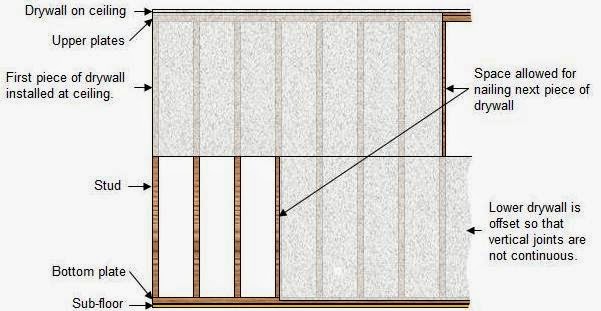knocking out the nails
Started knocking out all the nails, screws, hooks, and hangers sticking out of the Living room walls, getting ready to fill, sand, and paint. Then I looked at the ceiling. The ceiling will be a little bit of work. Just about every nail head is recessed into a dimple and will need chipping out and filling. The main issue I found is the spot in the center of the ceiling where there was at one time a ceiling light. The light was removed years ago and a round plug was made and covered over with plaster or joint compound. It has cracked all the way around and some of the sheet rock around it also broke out. No matter though, correct? Cut around the hole, screw in a couple pieces of wood behind it, screw in a replacement sheet rock plug, tape, mud, sand, and paint. Not so easy.
In most buildings when sheet rock is being hung, one tries to end a sheet on a beam, or "arranges" for the sheet to end on a beam..."supported"
Well not so on my ceiling, three sheets come together in the middle of a bay. The ceiling light was added at the three way joint. So cut out the hole to a square, except the "berm" of plaster and tape holding these sheets together blows apart. This means a bigger patch and some seam taping. I should step back a step here and mention something. This morning I woke up, showered, brushed, and got dressed for work. Sitting there with time to burn, I decided to cut this section for replacement. This gives you a good look for work if you want to look like you just rode across Death Valley.
The other problem I have come across is that I have determined that fire codes may have changed slightly over the years, because the sheet rock mounted in the house is a hell of a lot thinner than the stuff they sell today. Because of the difference and because I have a wall in my dinning room that needs to be replaced, I am stealing patch pieces off the dinning room wall to repair the living room wall and ceiling. The dinning room will not be an issue in that the entire lower section of the wall needs replacing and a simple molding strip will disguise the difference in the the sections thicknesses.

No comments:
Post a Comment